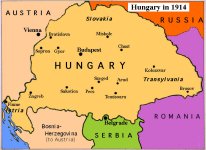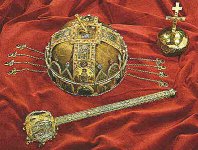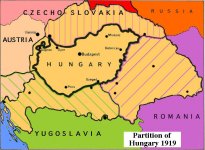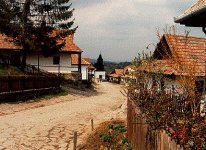 Hungary pre-Trianon |
 Magyar crown and scepter |
 Hungary post-Trianon |
 Hungary pre-Trianon |
 Magyar crown and scepter |
 Hungary post-Trianon |
Brief History of Hungary or Magyarország
![]()
|
Everyone thinks of Hungary as the land of the Huns, and they did come to this region of Europe in about the 5th century a.d. There is much to be told about that time in Hungary's history, but we are going to confine ourselves to the birth of the modern nation of Hungary which began with the reign of Saint Stephen.
|
|
![]()
Some photos of
historical places
 traditional room with tile stove |
 another traditional room |
 old traditional kitchen |
 old fashioned looking village |
 traditional thatch roofed house |
 old bedroom with tilestove |